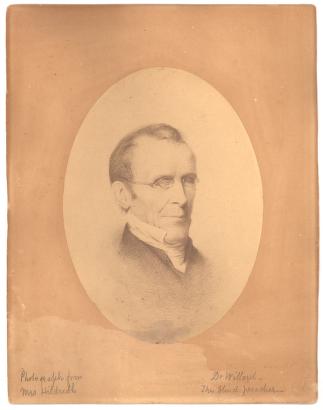|

(c) Pocumtuck Valley Memorial Association, Deerfield MA. All rights reserved.
Beliefs : An Age of Optimism
|
|
Like most people in the seventeenth century, the Puritans believed that there was only one true faith. The spirit of the age was not one of religious freedom or toleration, but of unyielding orthodoxy. This worldview began to break down at the end of the eighteenth century. The notion that men and women could help to effect their own salvation through their own efforts marked a radical departure from the more pessimistic doctrine of total and helpless depravity. Optimism about mankind's ability to improve itself and the world lay at the heart of that explosion of religious revivalism known as The Second Great Awakening.
Religious differences had been tolerated grudgingly, if at all, before the American Revolution. Now, the Constitution of the new nation forbade the government to establish any national church or to make any law prohibiting the free exercise of any religion. As Americans rejected the old orthodoxy, an intense period of religious exploration and experimentation followed. A relatively few intellectuals embraced Deism and some New England Congregational churches became Unitarian. Most people, however, turned to some form of evangelical Protestantism. The intense and sometimes wild and disorderly aspects of western camp revival meetings concerned many Congregational and Presbyterian Church leaders in the east. This was especially true in New England states like Massachusetts, where the Congregational church remained the established, tax-supported state church well into the 1800s. The Reverend Lyman Beecher of Connecticut accused the famous Methodist revival preacher Charles Finney of planning to "come into Connecticut and carry a streak of fire all the way to Boston." Beecher promised Finney, "as the Lord liveth, I'll meet you at the State line, and call out all the artillerymen, and fight every inch of the way to Boston, and then I'll fight you there."
Perhaps the most significant effect of The Second Great Awakening was the way in which it helped Americans to connect with one another in an expanding and mobile society. Men and women founded countless reform associations to put into practice the optimistic, evangelical message of the Awakening. Revivalism also spawned utopian societies whose members sought to perfect the world through reforming living arrangements, diet, and sexual practices.
top of page
|
Reverend Samuel Willard (1776-1859)
| creator Willis Knowlton |
| date 1860 |
| location Deerfield, Massachusetts |
| height 7.37" |
| width 5.25" |
| process/materials paper print |
| accession # #1996.12.2571.02 |
|





